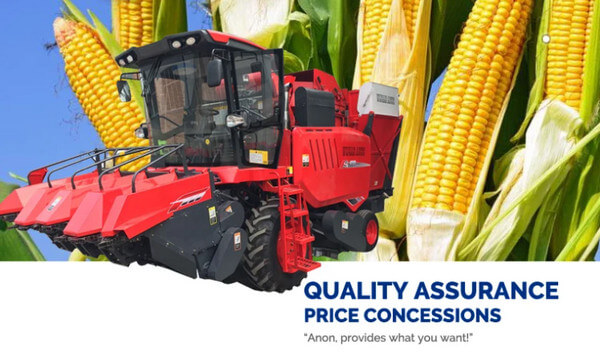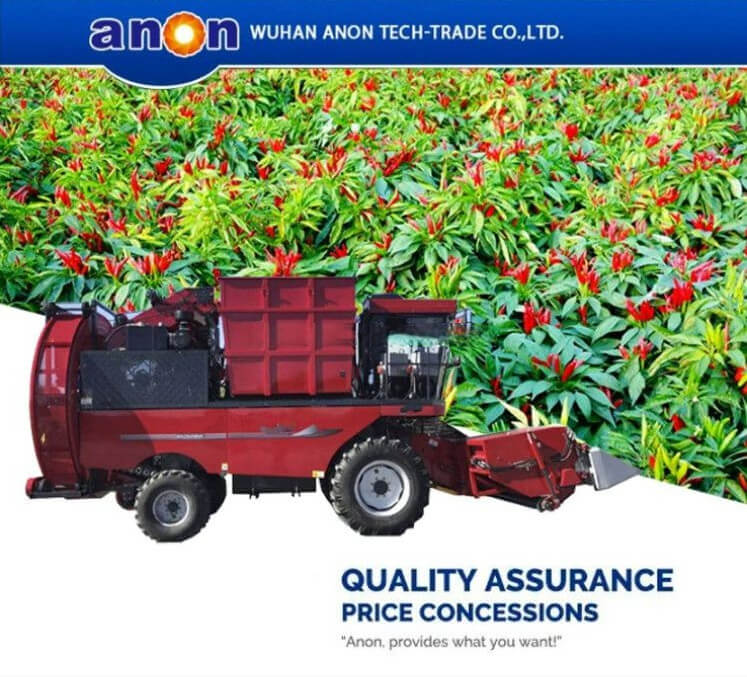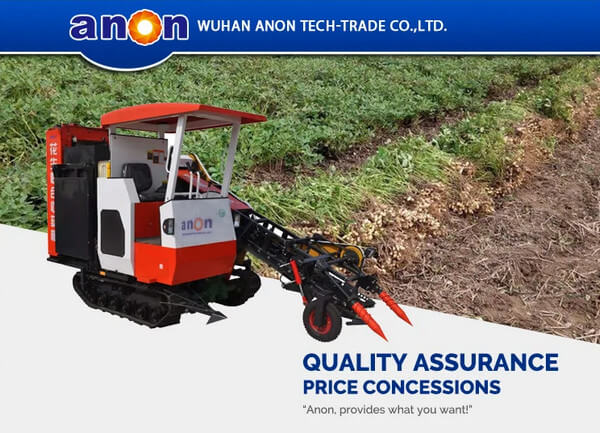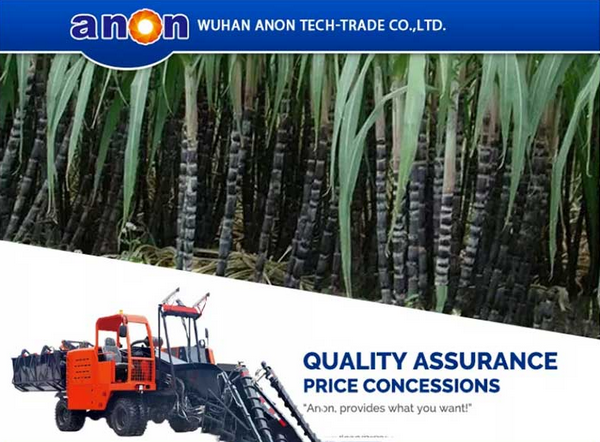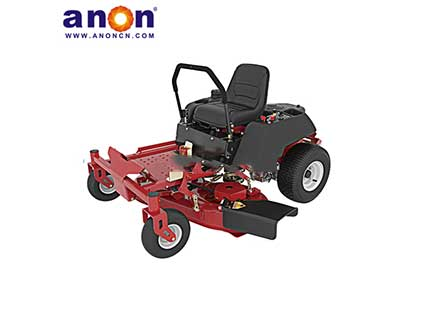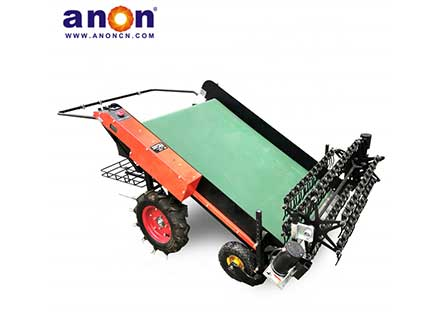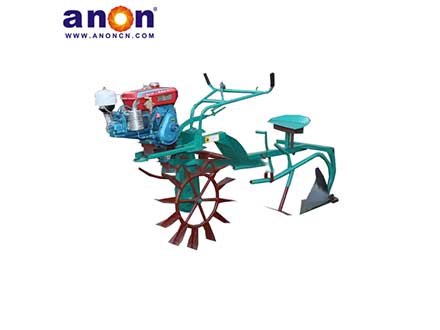Introduction
The corn combine harvester is a very efficient harvester that can harvest corn for you at once, ultimately reaching the corn kernels. So, how does the corn combine harvester achieve this process? How to choose a suitable corn harvester for oneself? Next, ANON will explain how to use the combine harvester to harvest corn, the harvesting principle of the corn combine harvester and how to choose the appropriate agricultural machinery for your farm. If you are interested, keep reading.

How to Use a Corn Combine?
Before harvest
First, you need to adjust the header height of the combine harvester so that the cutting blades can cut into the corn stalks. Check important components such as the engine, hulling device, and threshing device, and make necessary adjustments.
Avoid obstacles in the field, such as utility poles and large rocks. Harvest when the corn is fully mature and the kernel moisture content is below 25%. Too low a moisture content will result in kernel loss, while too high a content will make threshing difficult and storage unsuitable.
During harvest
During operation, reduce the travel speed appropriately and maintain a steady flow to allow the harvester to fully process the corn stalks. Plan the harvesting route in advance, generally using a clockwise centrifugal or counter-clockwise centripetal approach to reduce turning time. Follow the correct operating procedures and adjust machine parameters to ensure safe and efficient harvesting.
When the grain bin is full, unload the grain onto the transport vehicle promptly to avoid frequent stops for unloading, which would affect operational efficiency.
After harvest
After finishing your work for the day, you need to thoroughly clean the machine of dirt, straw, corn silk, and other debris. Pay special attention to the area around the engine and radiator to prevent overheating. Also, check and maintain any wear parts to prepare for the next job.
How Does a Corn Combine Work?
The corn combine harvester can complete tasks such as cutting, picking ears, peeling, threshing, cleaning, and straw processing for you in one go. Corn joint cutting: When the harvesting harvester is working, the first step is to use the divider on the cutting table to gather and straighten the rows of upright or fallen corn stalks, and the lower cutting knife will cut the corn stalks.
Cutting
After gripping the conveyor chain to transport the entire corn stalk to the position of the harvesting roller, the harvesting roller breaks off the corn ear and then transports the harvested corn ear to the peeling device through the conveyor.
Peeling
The peeling device consists of several pairs of peeling rollers, which have convex edges on their surfaces and rotate in pairs towards each other. The corn ear picking and peeling roller rolls forward, and is constantly torn and pulled by the peeling roller. The bracts are peeled off and then pushed to one side by the conveying screw below, and then discharged from the outside of the machine by the stem roller.
Threshing
The peeled corn ears enter the threshing device. The most mainstream currently is the axial flow threshing drum. The corn now enters the space composed of a longitudinal drum filled with nail teeth and a peripheral concave plate screen. The drum rotates at high speed, and under multiple gentle collisions and kneading between the picking drum, intaglio plate, and corn ear, the corn kernels are separated from the corn cob.
Cleaning
After separation, the corn kernels will still contain some broken corn cobs, stem impurities, etc., which require cleaning. They are initially separated by a vibrating sieve plate, and a cleaning fan blows upwards from the bottom of the sieve to urge lighter impurities outside the machine, while heavier corn kernels pass through the sieve holes and fall into the vertical conveying screw at the bottom, which is then transported to the grain tank for storage.
Straw processing
The corn combine harvester has a pulverizer at the back of the machine that cuts and crushes the upright straw into short sections while picking the ears on the cutting table, and then evenly throws it into the field. The organic fertilizer improves the soil.
How to Choose a Corn Combine?
When choosing a suitable corn combine harvester, you need to consider the machine’s actual needs, performance, and advantages. You can roughly select from the following requirements:
Machine size and capacity
According to the size of the corn field and the expected yield, choose the appropriate machine size and capacity.
Model technical characteristics
Consider the performance of the cutter and threshing system of the machine to ensure efficient separation of corn kernels and cobs.
Consider applicability
Choose a more adaptable combine harvester according to local soil conditions, climate conditions, topography, and other factors.
Price and cost performance
For farmers with limited budgets, choose machines with reasonable prices, small sizes with low power, high reliability, and easy maintenance.

Conclusion
If you need to harvest corn and are looking to purchase a machine to improve efficiency, please feel free to contact ANON. We offer a full range of high-quality harvesters. Tell us your needs, and we will provide you with the most suitable option! Users who need to purchase crop harvesting equipment are also welcome to visit our official ANON website to learn more about our mechanized equipment products. We believe everyone can find satisfactory agricultural machinery products on our platform.
FAQ
How much does a combine harvester cost?
Combine harvester prices vary widely, with new self-propelled models typically ranging from $400,000 to over $1 million. Used machines are significantly more affordable, but prices vary depending on age, brand, features, and overall condition. Key factors influencing price include the brand, machine size and capacity, and whether specific attachments, such as a header, are required.


